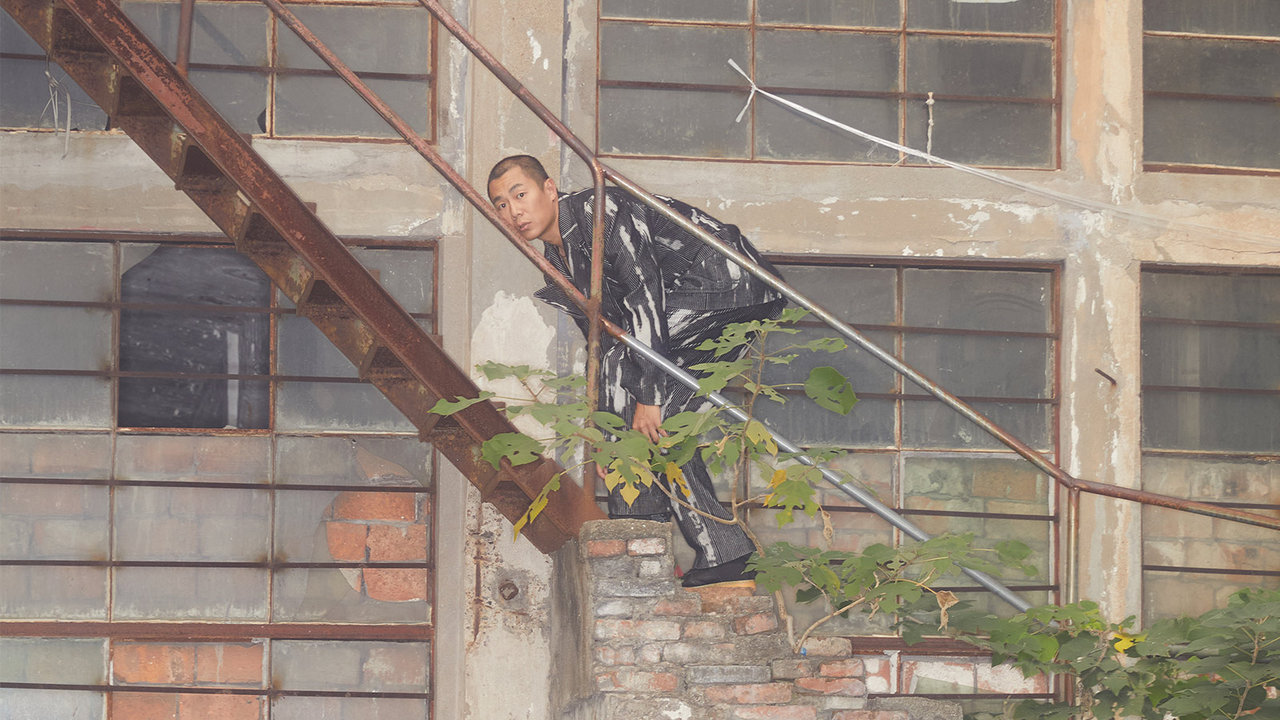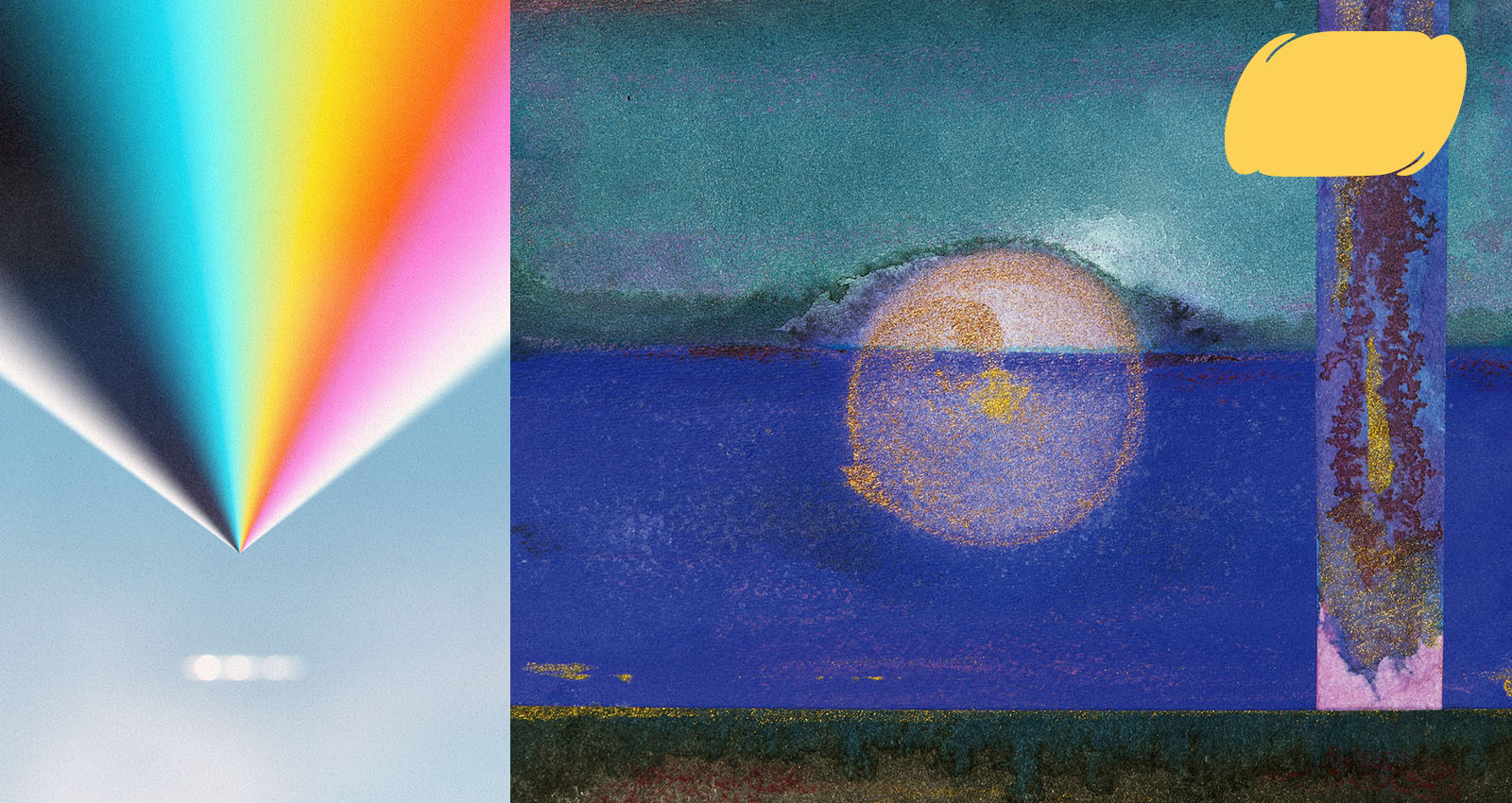
The taxonomy of contemporary classical music—new music, contemporary music, whatever you want to call it—is a thorny issue. But every month, we’ll take a look at some of the best composer-driven music to surface here on Bandcamp, that which makes room for electronic experimentation, improvisation, and powerful takes on old classics.
Wendy Eisenberg
The Possibility of A New Work for Electric Guitar



Vinyl

The origins of this EP begin with a short piece Morton Feldman wrote in 1966 for fellow composer Christian Wolff. Wolff had acquired an electric guitar during at a period of time when many of his colleagues were experimenting with rudimentary electronics. He took the instrument and a small amplifier to Feldman’s apartment, gamely attempting to translate chords his friend was playing on a piano to the guitar—an instrument he barely knew how to play. After an hour of tinkering, Wolff left with the freshly minted score for “The Possibility of a New Work for Electric Guitar,” which he went on to perform a few times. He had plans to perform it again at Yale, but when he stopped to see a friend on the way to the school, someone broke into his car and stole the guitar and the only copy of the score. The vanished work was forgotten until the late 1990s, when Dutch guitarist Wiek Hijmans discovered some notations for the piece on a scrap of paper in Feldman’s archives, prompting him to ask Wolff to rewrite the piece from his memory, which led to his 2004 piece “A New Possibility.” Finally, in 2002 a recording of the original Feldman piece played by Wolff was discovered at the Bay Area radio station KPFA, where it had been performed. Guitarist Seth Josel then transcribed the music from the recording. The circuitous sequence is documented on this fascinating EP, with the original Wolff version from 1966 followed by a new version based on Josel’s work played by Wendy Eisenberg, which is far more forceful and assured than Wolff’s admittedly tentative, shaky original. It also includes Eisenberg’s take on Wolff’s knotty recreation, offering a beguiling peek into what the New York School might have done with the instrument.
Niels Lyhne Løkkegaard & Quatuor Bozzini
Colliding Bubbles
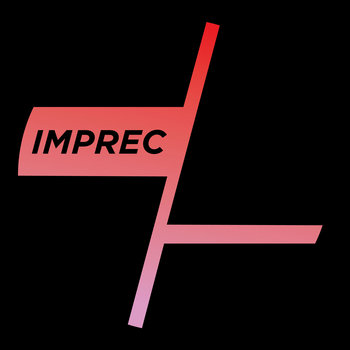


Compact Disc (CD)

Danish composer Niels Lyhne Løkkegaard is a dyed-in-the wool experimentalist, often setting up situations where related instrumentation is stacked up to unleash engrossing harmonic activity. For this fantastic new work, he asked Montréal’s exceptional Quatuor Bozzini to function as a double quartet, requiring them to all play harmonica at the same time they created sounds with their usual string instruments. Løkkegaard attempts to translate the morphing of microscopic organisms, colliding into one another, through sound. As suggested by the work’s title—Colliding Bubbles—he envisioned sounds crashing into one another to generate sonic fissures pushed beyond the brink by harmonic stressors. It’s telling that the artwork for the album features nothing more than a series of microscopic images of bubbles, in which tiny pockets of air within a loosely circular blob create a web of elaborate shapes of varying size. The sustained chords bowed by the quartet produce electric, shimmering lakes of sound shadowed by halos of harmonic white noise. The string sounds are subsequently splintered by the strident harmonica tones. On the surface not much happens, but once we can pierce that skin and burrow in the core sound a new world of coloristic abstraction emerges. Dig deep enough and time will seem to freeze over its 29 psychedelic minutes.
Morton Feldman
Complete Music for Piano and Cello
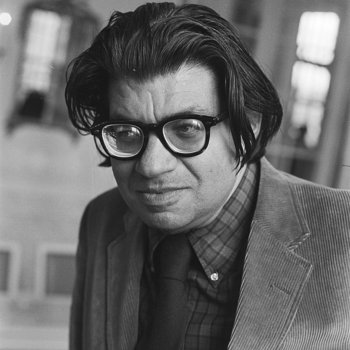

Compact Disc (CD)


With his 1981 masterpiece Patterns in a Chromatic Field, Morton Feldman continued his journey into long-form works that toyed with the real-time memory of his listeners. In these slowly cycling compositions, the sort of intricate irregularities woven into the patterns of Turkish rugs were translated into carefully measured sound. That piece for piano and cello occupies the bulk of this stunning double-CD release, exquisitely performed by Marilyn Nonken and Stephen Marotto, respectively. The set collects all of Feldman’s work for this configuration of instruments, including the first ever recording of his 1946 piece “Sonatina,” written in the shadow of Bartók. The 1951 work “Composition for cello & piano” is a set of seven super-short movements that feel like raw material he would later refine and embroider within long form works. There’s also “Two Pieces,” a pair of miniatures from 1948, when the composer was studying with Stefan Wolpe, and the previously unpublished 1972 vignette “For Stockhausen, Cage, Stravinsky, and Mary Sprinson.” The set opens and closes with two very different performances of “Durations 2,” one of his earliest experiments with graphic notation. While the pitch material is fully mapped out, there’s no indication of the duration for each note, with both performers taking their own path while remaining mindful not to tangle the sounds up. As evidenced here, no performance is ever the same. Still, the apex of Feldman’s writing for piano and cello remains Patterns, a viciously tough piece to play, casting a deceiving spell of serenity while requiring the players to maintain hyper-focused concentration.
Paul Paccione
Distant Musics



Compact Disc (CD)

For years the relationship between the London new music ensemble Apartment House and the Sheffield, England record label Another Timbre has been bearing fruit, bringing us new accounts of landmark work from John Cage and Morton Feldman while introducing a steady stream of vital new voices. In late February, the label released three superb Apartment House albums: portraits of Nomi Epstein and Paul Newland, both mid-career voices, as well as this knockout featuring the work of Paul Paccione, an American composer who retired from academia in 2018. While I was vaguely familiar with his work through a single New World album, Apartment House leader and cellist Anton Lukoszevieze somehow divined a body of work that seems apart from the other stuff I’ve heard. Still, most of it comes from the 1980s, with some subsequent revisions. It almost feels like a different composer—but I’m not complaining, because Distant Musics has been haunting me for weeks, its patient melodies unwinding through a fog of undulating harmony with slow-motion grace. Four weightless yet grain-heavy violins hover through the exquisite, episodic “Violin,” where tightly clustered harmonies sparkle and sting, as if electric. It’s one of the most extraordinary things I’ve heard in a long while. The album closes on a lighter note, with a pair of flutes tracing out endless variations on simple strands of notes with a Feldmanesque feel if not tempo. It’s a genuine revelation.
Soosan Lolavar & Ruthless Jabiru
Girl
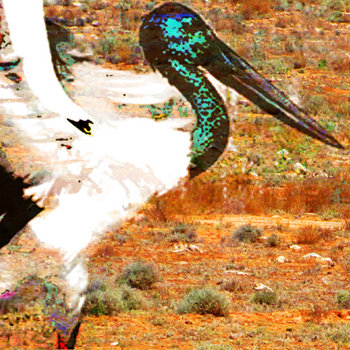


Compact Disc (CD)

I first heard the music of British-Iranian composer Soosan Lolavar last year on Every Strand of Thread and Rope, a gripping collaboration with Berlin-based violinist Sarah Saviet. The long-distance, pandemic-era partnership sought to bridge the gap between the tuning of the composer’s Eastern santoor—the Persian hammered dulcimer—and the Western violin. Sticking with a single mode from Persian music, Lolavar asked the violinist to make up some of the differences by tuning the violin down a minor sixth, an adjustment that makes it more unstable and unpredictable. Saviet improvised on the themes, although not necessarily in the way a santoor player might in traditional Persian music. This new album enlists the UK-based chamber ensemble Ruthless Jabiru, conducted by Kelly Lovelady, to navigate several new works exploring similar divides, as well as presenting a new arrangement of “Undone,” the most visceral movement of the four featured on the solo Saviet recording. Here we get a delicious, suspenseful tension against the ensemble’s taut orchestral gestures and shadings. The dynamic santoor playing of Faraz Eshghi Sahraei crackles over the deliciously woozy, tonally wobbly “I am the Spring, You are the Earth,” erasing the divides different traditions in a way that mirrors the composer’s indemnity as an Iranian living in England. The title composition derives all of its material from an Iranian folk melody, but the transformation echoes how oral transmission constantly changes and mutates a narrative until only the core idea endures, transcending any era or geography. In the final piece, “Tradition – Hybrid – Survival,” Lolavar built Roxanna Albayati’s exquisite cello solo from a four-note melody the composer heard on Iranian television, pushing it further and further from its source, yet in a different way than with “Girl.” Rather than offering glib hybrids, Lolavar has created something that reflects her own dualties, a give-and-take of sensibilities and traditions that’s unique to her experience.
Miroslav Beinhauer
Pieces For Sixth-Tone Harmonium



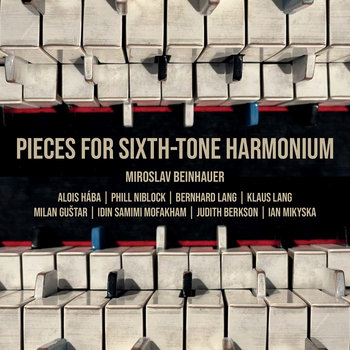

Compact Disc (CD)



This riveting 2-CD release is part of a larger project that celebrates Czech composer and theoretician Alois Hába, the early 20th century advocate of microtones in European classical music. His ideas found little traction during his lifetime. Utterly devoted to the cause, Hába designed a custom-made sixth-tone harmonium as a demonstration tool for his students. He never considered it a proper instrument. In 2018, the young Czech pianist Miroslav Beinhauer was enlisted by the Ostrava Center for New Music to play the harmonium in a performance of Hába’s sixth-tone opera Thy Kingdom Come, one of only two pieces he wrote using the instrument. The experience led the performer to master the instrument, and, eventually, commission new work for it. Earlier this year two long-form compositions were released on Music for Sixth-Tone Harmonium, with Norwegian Fredrik Rasten adding sounds from a pair of e-bowed electric guitars and Czech composer Ian Mikyska producing electronic material. This new collection goes deeper, with a variety of composers from Europe and the U.S. exploring the bespoke harmonium’s realm of possibilities. The collection opens with the adagio from Hába’s other piece for the instrument “Six Compositions for Sixth-Tone Harmonium,” which does feel like a exposition more than a composition. But the rest of the works are impressive, each finding different avenues of harmonic expression for the instrument: the monolithic drone of Phill Niblock’s epic “Harmonius”; the wry, ear-tickling dynamics of Klaus Lang’s wonderful “Not One and Not Two”; or Judith Berkson’s levitational “Bent Meanings.” Here’s hoping this is just the beginning of a new body of works.
Leslie Ting
What Brings You In

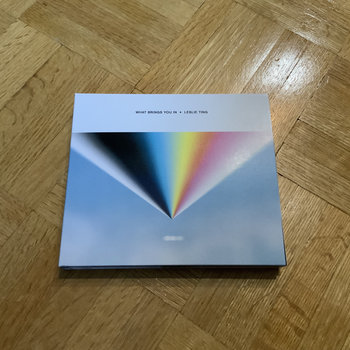
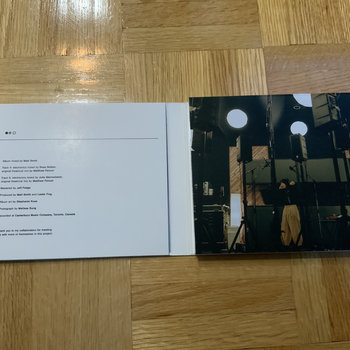





Compact Disc (CD),




The music on this moving album from Toronto violinist Leslie Ting emerged from a larger hybrid performance work she mounted, centering around different types of therapy. The sonic elements were modified for this recording—which comes with both a conventional stereo mix and a binaural mix—but the vibrant results thrive whether one considers their conceptual underpinnings or not. Most of the music was developed specifically for the project, although the two brief movements from Linda Catlin Smith’s Dirt Road which open the album date from 2006. Ting blurs any line between composed and improvised material, moving from those Smith duets with percussionist Germaine Liu to the spontaneous title composition—named for the clichéd opening question a therapist might ask—without any sort of aesthetic rupture. Written or improvised, the music all feels of a piece. Ting designed “Sandplay” as sonification of sandplay therapy, with contact mikes installed in the four corners of a sandbox, picking up tactile abstractions fueled by therapeutic motion. Rose Bolton’s “Beholding” features Ting’s slashing lines cutting through a gauzy, drifty fabric of beats, floating vocal lines, and whispered dialogue, all designed to evoke the sort of internal transformation that therapy seeks to achieve. Julia Mermelstein’s “Folds in Crossings” also features solo violin and electronics, focusing initially on the string playing before building up the interaction with layers of electronics that grow more complex, another metaphorical shadowing of therapy.
Kyle Bruckmann
of rivers







Compact Disc (CD)




As someone who’s been listening to music of oboist Kyle Bruckmann for several decades, through different projects and styles, his mixture of rigor and humility have been constant. Although he’s a marvelous improviser, he’s been spending more and more time working with composed material, both in Dana Jessen’s Splinter Reeds and with solo work. Of rivers falls into this second category, with a variety of composers taking advantage of Bruckmann’s technical range and his willingness to aim for the impossible. The collection opens with Jessie Cox’s “AT[ou]M,” a knotty miniature in which creaky multiphonics; short, jagged phrases; and warped pitches are plotted within silence, which the composer calls “the way in which spaces make sound come to our ears. Composer Hannah Barnes uses electronic interventions to destabilize Bruckman’s playing on “Dis/inte/gration,” which cuts through viscous, slow-moving noise with phrasing both jaunty and harsh—the two elements make peace…sort of. “Arachne,” by Helen Grime, is built from the myth of the title character and Minerva, moving from nonchalant confidence to frenzied struggle before scampering away like the spider the titular character becomes. In “DROP” Linda Bouchard asks Bruckmann to interpret a graphic score made from different analysis of water sounds and, combined with the electronics, we can deduce crackling ice, sibilant blasts of steam, and more abstract sonified liquid. Bruckmann’s own “Proximity, affect” was inspired by the isolation of pandemic-era performance, with close-miked extended techniques and throbbing electronics reflecting the performer’s sensation of playing within “a psychosocial gerbil ball.” The final piece reunites the oboist with Ernst Karel, his electronics partner in EKG, as they navigate Christopher Burns’s “The Mutiny of Rivers,” an electroacoustic hornet’s nest inspired by Luigi Nono’s La Lontananza Nostalgica Utopica Futura.
Richard Teitelbaum
Asparagus




2 x Vinyl LP


This left-field archival release features Richard Teitelbaum’s score for the experimental Suzan Pitt animation Asparagus (1979)—the first time it has been made available. The delightfully twisted 18-minute film was famously paired with David Lynch’s Eraserhead during a two-year run of midnight screenings at New York’s Waverly Theatre soon after its completion in 1979. The score is built around lush arpeggios produced with Moog modular and Polymoog synthesizers, each phrase seeming to mutate, forming new shapes much like the endlessly renewable morphing happening in the film. Improvisers George Lewis, Steve Lacy, Takehisa Kosugi, and Steve Potts are all credited, providing the acoustic sounds that appear in the opening and occasionally surface briefly later in the soundtrack. The album opens with “Asparagus (European Version), a longer piece from which the film music was drawn, sometimes slowed down, sometimes thickened with extra layers. The solo work is decidedly melodic and delicate, with endless twists and turns, transmitting a lush, lyrical glow that suggests a music box taking a psychedelic journey, warmly pulsating and drifting. The relationship between the two versions is obvious, but it’s fascinating to hear how Teitelbaum winnowed it down. The album concludes with a recent realization of an older piece called “Threshold Music” in which musicians are asked to make sounds at the edge of perception, making sure not to spill out over a field recording the composer made at his home in Bearsville, New York.
Ingrid Drese
Lointain intérieur


From reading the liner notes that Belgian electro-acoustic composer Ingrid Drese wrote for the four works on this new album, it’s clear that she creates abstract movies with sound, most derived in some way from poetic sources. The collection opens with “Pérégrinations d’une petite sphère happée par le temps,” a 2020 piece inspired by Henri Michaux’s poem “Afterwards,” which Drese translates as “an entanglement of voices, of pathways. A cloth of musical motifs enlightened by a trumpet-like sound, the spark of which, in time, fades to hide within the me.” Each of these dynamic works can trigger all sorts of images and synaesthetic visions, as our imaginations supply phantasmagorias for each work, as abstract sounds and shapes billow, drift, and collide. The composer doesn’t try to obfuscate her methods. She notes the number of loudspeakers and technical parameters she employed for the piece “Treize virgule huit,” The title touches on the age of the universe (“thirteen point eight” billion years) and the music reads like a truncated soundtrack for that epic history. It’s amorphous enough that a listener can easily fabricate their own narrative according to these richly textured, shape-shifting swirls, eddies, explosions, and percolations.




